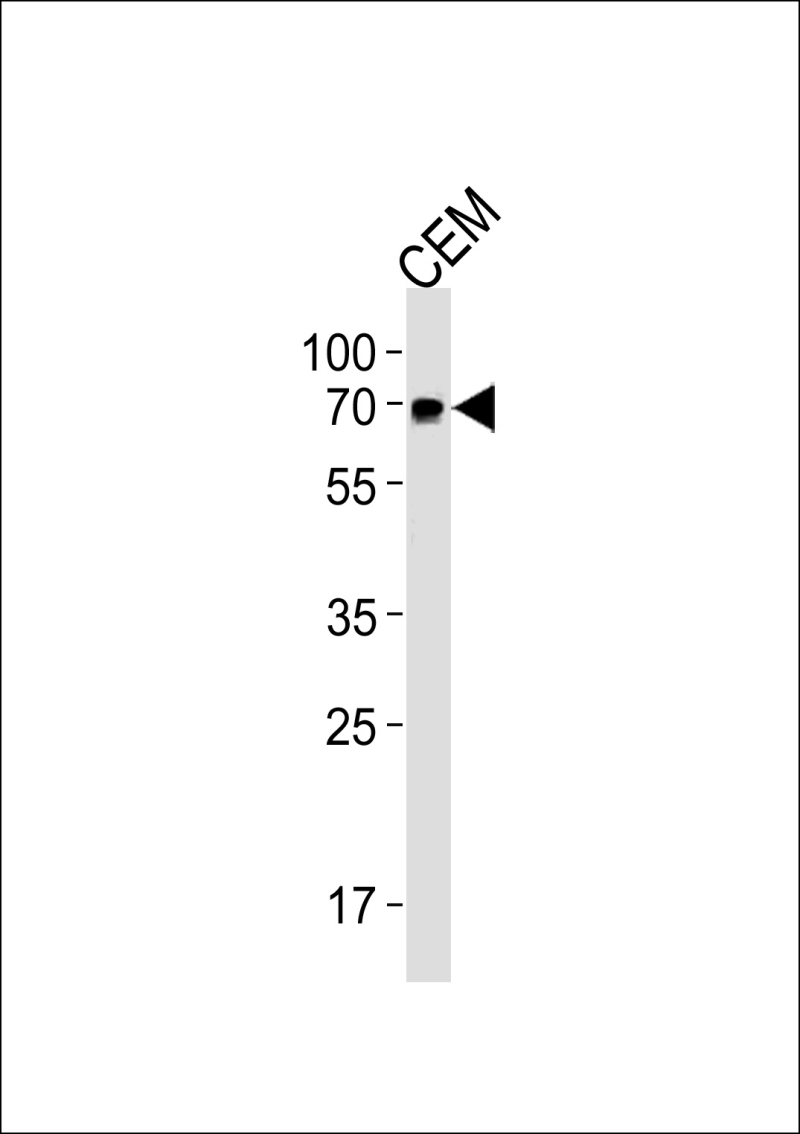
| WB | 1/1000 | Human,Mouse,Rat |
| IF | 咨询技术 | Human,Mouse,Rat |
| IHC | 咨询技术 | Human,Mouse,Rat |
| ICC | 技术咨询 | Human,Mouse,Rat |
| FCM | 咨询技术 | Human,Mouse,Rat |
| Elisa | 咨询技术 | Human,Mouse,Rat |
| Aliases | Interferon-induced guanylate-binding protein 2, GTP-binding protein 2, GBP-2, HuGBP-2, Guanine nucleotide-binding protein 2, GBP2 |
| Entrez GeneID | 2634 |
| WB Predicted band size | 67.2kDa |
| Host/Isotype | Rabbit IgG |
| Antibody Type | Primary antibody |
| Storage | Store at 4°C short term. Aliquot and store at -20°C long term. Avoid freeze/thaw cycles. |
| Species Reactivity | Human, Mouse, Rat |
| Immunogen | This GBP2 antibody is generated from rabbits immunized with a KLH conjugated synthetic peptide between 192-220 amino acids from the Central region of human GBP2. |
| Formulation | Purified antibody in PBS with 0.05% sodium azide. |
+ +
以下是关于GBP2抗体的3篇参考文献及简要摘要:
---
1. **文献名称**: *"GBP2 coordinates innate immune signaling and proteostasis to suppress Zika virus"*
**作者**: Li Y, et al.
**摘要**: 研究通过CRISPR筛选发现GBP2在抑制Zika病毒复制中的关键作用,利用特异性抗体验证GBP2与病毒RNA结合复合物的相互作用,揭示其通过激活干扰素通路及调控宿主蛋白稳态抗病毒的机制。
---
2. **文献名称**: *"Guanylate-binding protein 2 (GBP2) promotes melanoma progression by regulating AMPK/mTOR signaling"*
**作者**: Zhang H, et al.
**摘要**: 通过免疫组化(使用抗人GBP2抗体)发现GBP2在黑色素瘤中高表达,并与其侵袭性相关。机制研究表明,GBP2通过AMPK/mTOR通路调控肿瘤代谢,抗体阻断实验证实其在细胞迁移中的作用。
---
3. **文献名称**: *"Structural basis of guanylate binding protein 2 (GBP2) oligomerization and antimicrobial activity"*
**作者**: Kravets E, et al.
**摘要**: 利用兔源多克隆GBP2抗体解析GBP2蛋白在细菌感染中的寡聚化结构,发现其通过形成多聚体破坏病原体膜结构,研究通过免疫荧光和Western blot验证GBP2的亚细胞定位及功能。
---
4. **文献名称**: *"GBP2 is a prognostic biomarker and correlates with immune infiltration in hepatocellular carcinoma"*
**作者**: Wang Q, et al.
**摘要**: 通过肿瘤组织芯片结合抗GBP2抗体检测,发现GBP2表达与肝癌患者不良预后相关,且与CD8+ T细胞浸润呈负相关,提示其作为免疫治疗潜在靶点的可能性。
---
以上研究均涉及GBP2抗体的应用(如Western blot、免疫组化或功能阻断),并探讨其在病毒感染、肿瘤及免疫微环境中的生物学意义。
The guanylate-binding protein 2 (GBP2) antibody is a tool used to study the function and expression of GBP2. a member of the interferon (IFN)-inducible GTPase family. GBP2 is primarily involved in innate immune responses, playing critical roles in host defense against intracellular pathogens, including bacteria, viruses, and parasites. It is regulated by IFN-γ and other proinflammatory cytokines, which trigger its transcription via JAK-STAT signaling pathways. Structurally, GBP2 contains a globular N-terminal GTPase domain and an elongated C-terminal helical domain, enabling its oligomerization and membrane-binding capabilities to disrupt pathogen membranes or activate inflammasomes.
GBP2 antibodies are widely employed in research to investigate its subcellular localization, expression patterns in immune cells (e.g., macrophages, endothelial cells), and interactions with microbial components or host proteins. These antibodies aid in detecting GBP2 via techniques like Western blotting, immunofluorescence, and immunohistochemistry. Studies using GBP2 antibodies have linked the protein to autoimmune diseases, cancer progression, and chronic inflammatory conditions, where dysregulated GBP2 expression may influence cell proliferation, migration, or cytokine production. Additionally, GBP2 antibodies help explore its synergy with other GBPs (e.g., GBP1. GBP5) in pathogen surveillance and clearance. Research continues to define GBP2's dual roles in promoting antimicrobial activity versus potentially contributing to inflammatory pathology, highlighting its therapeutic relevance.
×